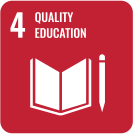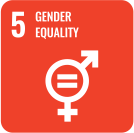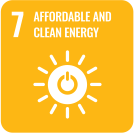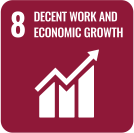Business Model for Sustainable Value Creation
Bank’s Sustainability Framework
Business model for sustainable value creation
The Business Model of the Bank for Sustainable Value Creation is built on the Bank’s Sustainability Framework (Figure 08) which addresses sustainability through a 3-pillar approach. It refers to two closely interconnected, mutually inclusive dimensions of sustainability i.e. ensuring the ability of the Bank to sustain its enterprise as a going concern as far into the future as can be imagined and taking care of the society and the environment, both built into the strategy through an integrated approach.
Bank’s Sustainability Framework
Purpose
To be a responsible financial services provider by enabling and empowering people, enterprises and communities towards environmentally-responsible, socially-inclusive and economically-enriching growth.
Guiding Principles and Standards
- CBSL Roadmap for Sustainable Finance in Sri Lanka
- CBSL Direction on Sustainable Finance Activities
- Sustainable Banking Principles of Sri Lanka Banks’ Association
- United Nations Global Compact Principles
- UN Sustainable Development Goals
3–Pillar Approach to Sustainability
Sustainable Banking
Responsible Financing
Financial Inclusion
Sustainable Products and Services
Responsible Organisation
Green and Safe Workplace
Workplace Culture
Sustainable Supply Chain
Community Sustsinability
Social Engagement
Environmental Engagement
UN Sustainable Development Commitment







Memberships and Affiliations
- Sri Lanka Banks’ Association Sustainable Banking Initiative
- UN Global Compact Sri Lanka
- Biodiversity Sri Lanka
- United Nations Development programme
Governing Policies: SEMS Policy | Environment & Social Policy
Governing Committees: Executive Sustainable Committee | Sustainability Working Committee
With some extent of overlapping, first two pillars – Sustainable Banking and Responsible Organisation – will take care of economic aspects while the third pillar – Community Sustainability – takes care of social and environmental aspects, in the best interest of all the stakeholders at all times.
Leveraging the Bank’s strengths for long term value creation, the robust business model of the Bank revolves around the two primary activities of financial intermediation and maturity transformation, drawing “inputs” from Financial, Manufactured, Intellectual, Human, Social and Network, and Natural Capitals and converts such inputs to “outputs”, leading to outcomes for the benefit of the stakeholders who own and provided input capitals. One of the content elements in an integrated report as per the International Integrated Reporting Framework is the disclosure of the business model. Accordingly, a narrative guide to the visual depiction of the Business Model and the Statement of Financial Position is given below.
Inputs
A large number of stakeholders provide the resources or inputs required for the Bank to undertake its activities, identified in the Business Model as “capitals” from which the Bank derives value. Besides the financial capital reflected in the Statement of Financial Position, these input capitals include the institutionalised knowledge, the brand equity and reputation the Bank has built over years and the strength of its stakeholder relationships which might also be termed as “off-balance sheet” or "hidden" capitals. These inputs are then deployed in the Bank’s business activities – literally capitalised – to generate outputs which are the Bank’s key products & services and outcomes which is the value created by the Bank for itself and for its stakeholders as a consequence of the outputs. As demonstrated in the Business Model, this is a dynamic process where capitals are constantly circulating and value is continuously being created and transformed. This Integrated Report has captured the story of this dynamic process across year 2022 and a snapshot of the Bank’s capital position in terms of several indicators under each capital is given in the section on Statement of capital position.
Financial intermediation and maturity transformation
As a commercial bank, the Bank's business model is centered on two key value-creating activities: financial intermediation and maturity transformation. Financial intermediation is the process by which the Bank acts as a middleman between various stakeholders, depositors and borrowers in particular, facilitating the conversion of deposits into investments and other assets. Maturity transformation is the process of transforming short-term funds into long-term lending and investments. The efficient allocation of financial resources underlying these two activities is essential for the economic development of the country at large.
Statement of capital position
The activities undertaken by the Bank to advance financial intermediation and maturity transformation, as well as the resultant interactions, interconnectivities, and tradeoffs that occur among the capitals in this dynamic process, serve to bolster the capitals and reflect the value created over the year, as shown in the Statement of the Capital Position of the Bank at the beginning and the end of year 2022.
The two broader categories of income –
net interest income from fund-based operations and fee and commission income from fee-based operations – enable the Bank to enhance its financial capital. In addition, the value created through the delivering value to and deriving value from the various other stakeholders are reflected in the improved positions of the other capitals. In fund-based operations, money is raised from depositors and borrowed from other sources in order to lend and invest; this process generates interest income and incurs interest costs. The resulting net interest income compensates the Bank for credit risk, funding risk, and interest rate risk. All other services offered by the Bank that do not involve funds are fee-based services. Demonstrating efficient financial intermediation, the Bank generated 61.51% of its total operating
income by way of net interest income
(2021 – 70.69%).
Gearing
Financial intermediation and maturity transformation make the Bank's business model to be very different from that of other corporates. Being a commercial bank with the majority of funding coming from deposits from customers, the Bank resorts to the process of gearing to make up for the relatively low Return on Assets (ROA) and generate returns to investors that are acceptable in terms of Return on Equity (ROE). Gearing involves expansion of business volumes by growing deposit base and securing funding from other sources and lending or investing such funds to grow the loan book and investment portfolios on the strength of a given amount of capital.
Gearing is fundamental to the banking business model, allowing banks to handle about 10 times higher business volumes compared to the available equity. What made this possible is the license to mobilise deposits from the public. However, the Bank is cognisant of the fact that gearing exposes the Bank to numerous internal and external risks. Moreover, certain emerging global developments threaten to disrupt this business model. As discussed later in this Annual Report, the Bank has established a sound risk governance and management framework with the necessary Board oversight that has enabled it to successfully manage such risks.
A detailed disclosure on the Bank’s capital, risk weighted assets and Capital Adequacy Ratios is given in Annex 2.
Stakeholder returns
As shown in Table 07 in the section on Statement of capital position, the Bank has had a track record of improving its profitability over the years while carefully maintaining gearing at acceptable levels. This profitability reflects the net impact of the value the Bank was able to create by delivering value to and deriving value from its stakeholders. From the investors’ perspective, this value creation is reflected in the returns the Bank was able to generate in the form of earnings, dividends, share price appreciation, etc. The Bank’s market capitalisation is the highest among banking institutions and ranks twelfth among all companies listed on the Colombo Stock Exchange at the end of 2022. Refer the Investor Relations section for more information on the performance of the Bank’s shares.
As a well-established regional bank, while growing organically in Sri Lanka, Bangladesh, the Maldives and Myanmar, the Bank is constantly in search of opportunities to expand inorganic and regional growth, primarily to further diversify its risk exposures and revenue streams geographically, thereby improve the sustainability and long-term value creation of its operations.